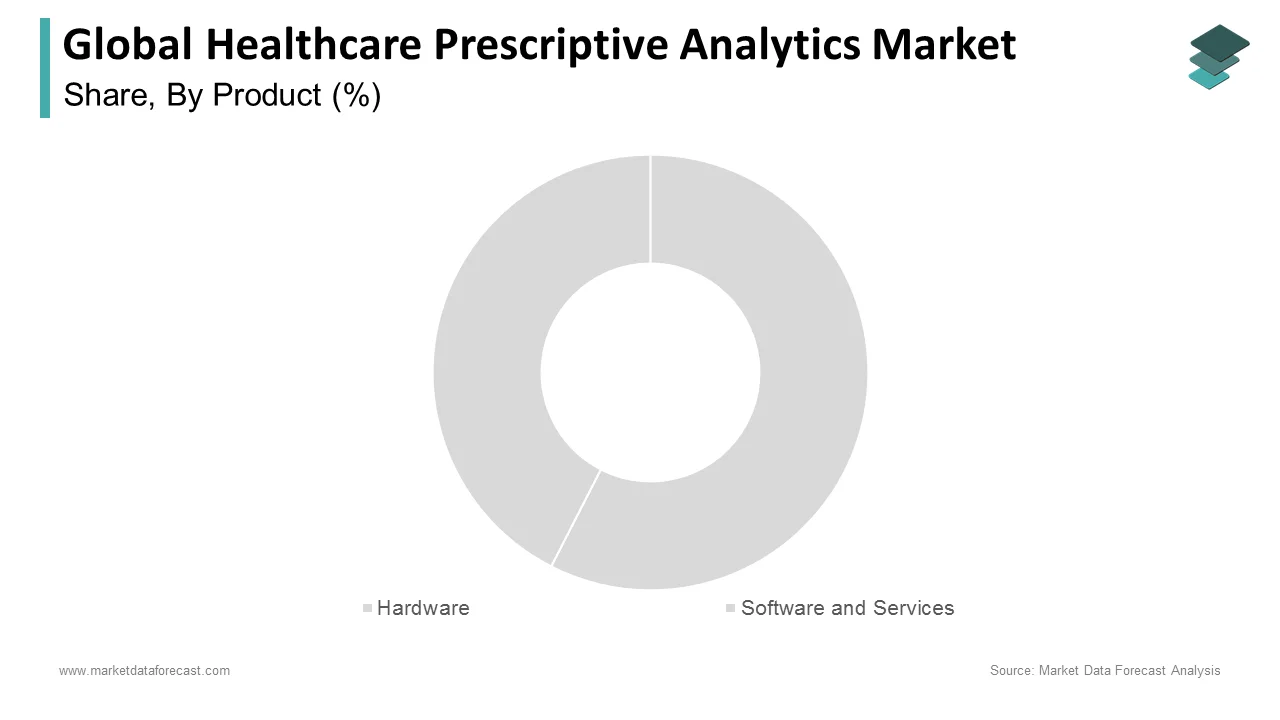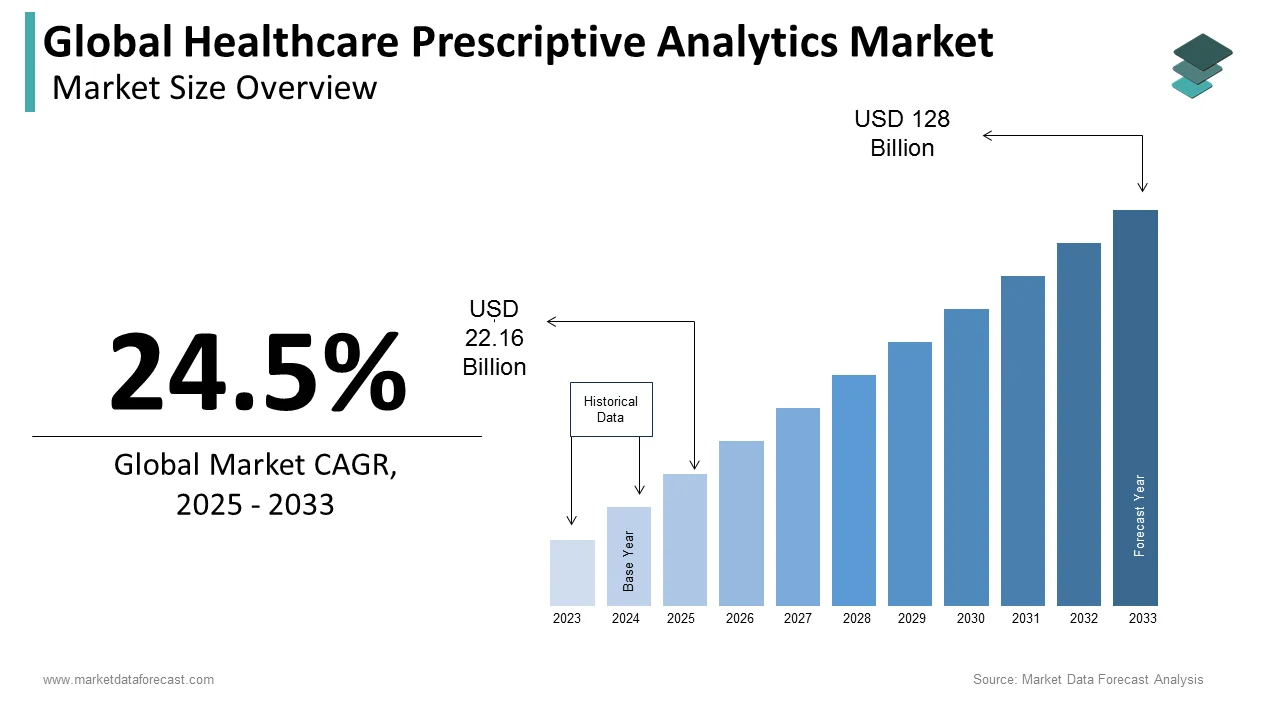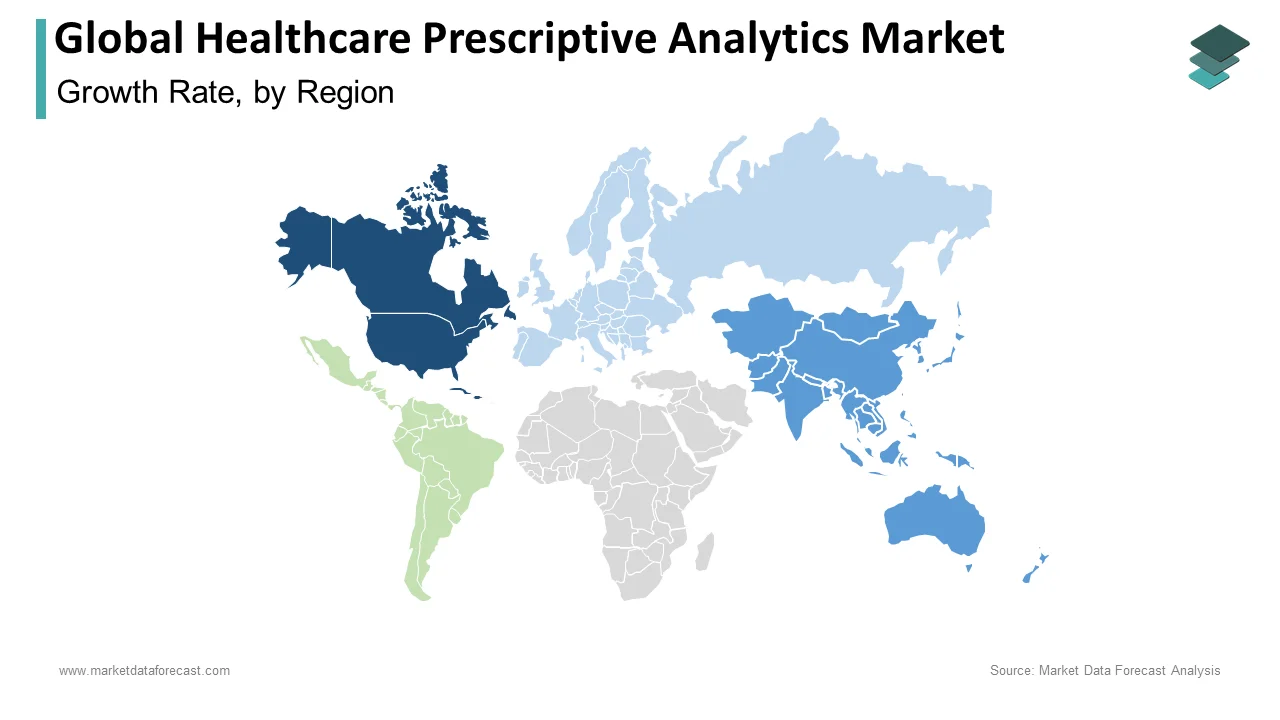Global Healthcare Prescriptive Analytics Market Size, Share, Trends & Growth Forecast Report By Product, Application, Deployment, and Region (North America, Europe, Asia-Pacific, Latin America, Middle East and Africa), Industry Analysis From 2025 To 2033.
Global Healthcare Prescriptive Analytics Market Size
The global healthcare prescriptive analytics market was valued at USD 17.8 billion in 2024. The global market is projected to grow from USD 22.16 billion in 2025 to reach USD 128 billion by 2033, exhibiting a compound annual growth rate (CAGR) of 24.5% during the forecast period 2025-2033.
MARKET DRIVERS
The growing demand for population health management and growing digital healthcare technologies propel the global healthcare prescriptive analytics market. The practice of improving clinical health outcomes of a defined group of people through greater care coordination and patient involvement, backed by suitable financial and care models, is referred to as population health management. Population Health Management (PHM) is the analytic utilization of data from many sources. This information is aimed at specific population segments to treat diseases peculiar to that group. The Institute for Healthcare Improvement (IHI), in collaboration with the American Heart Association (AHA) and the Catholic Health Association of the United States, has released a report (CHA). The initiative aims to get the 4Ms Framework into 20% of US hospitals and medical practices by the end of 2020. The aim is that, among other things, this method will enhance clinical results, standardize physician approaches, and help to lower the cost of illness management.
Electronic health records (EHR) are becoming more widely used in the healthcare industry, which is estimated to accelerate the need for the healthcare prescriptive analytics market in the near future. The adoption of big data in the healthcare industry is expected to accelerate the market's growth rate. The computerized healthcare information system has advanced tremendously in the last two decades. Because of its creative contribution to decision-making and strategic development in the healthcare industry, big data analytics is getting a lot of attention. Big data is only starting to alter the healthcare industry and move it forward in various ways. Big data in healthcare promises to revolutionize medicine, technology, and finance, resulting in better patient care and more value for healthcare companies. The application of big data analytics in healthcare offers several beneficial and perhaps life-saving implications. Only a few areas of healthcare are predicted to be transformed by big data. According to the National Institutes of Health, precision medicine seeks to enlist one million people in the All of Us research program to volunteer their health data. When used in healthcare, it might help avoid epidemics, cure diseases, cut costs, and so on by analysing specific health data from a community (or an individual). The Future of Big Data in Healthcare Is Bright.
Additionally, the usage of healthcare analytics in precision medicine is significantly growing, expected to drive the growth of the global healthcare prescriptive analytics market. Healthcare firms are investing many financial and non-financial efforts into new technology to help with big data analytics and precision medicine. Precision medicine strives to enhance clinical outcomes and healthcare delivery. Improved throughput and earnings due to patient prediction. Furthermore, the growing popularity of reduced healthcare expenditures increased pressure to deliver excellent treatment and control healthcare expenses. With an emphasis on e-health cooperation, venture capitalist investments are further expected to drive the global healthcare prescriptive analytics market.
MARKET RESTRAINTS
However, the scarcity of data scientists and analysts and the high costs associated with analytics are majorly hindering the growth rate of the global healthcare prescriptive analytics market. Though AI is now used to assist real doctors, computers will soon be able to replace them entirely. The impact of ongoing technological improvements on decision-making. With the machine, there are moral hazards and human intervention points. Lack of regulation, algorithmic bias, privacy concerns, and data security further restrict the global healthcare prescriptive analytics market.
REPORT COVERAGE
|
REPORT METRIC |
DETAILS |
|
Market Size Available |
2024 to 2033 |
|
Base Year |
2024 |
|
Forecast Period |
2025 to 2033 |
|
CAGR |
24.5% |
|
Segments Covered |
By Product, Application, Deployment, and Region. |
|
Various Analyses Covered |
Global, Regional, and country-level analysis; Segment-Level Analysis, DROC; PESTLE Analysis; Porter’s Five Forces Analysis, Competitive Landscape; Analyst Overview of Investment Opportunities |
|
Regions Covered |
North America, Europe, APAC, Latin America, Middle East & Africa |
|
Market Leaders Profiled |
IBM, Cerner Corporation, SAS Institute Inc., Allscripts Healthcare Solution, Mckesson Corporation, Optium Inc., Medeanalytics Inc., Verisk Analysts, Inc., and Oracle Corporation., and Others. |
SEGMENTAL ANALYSIS
By Product Insights

The software segment is anticipated to grow at the highest CAGR and account for the major share of the worldwide market during the forecast period. The healthcare provider processes and interprets patient data, electronic health records, medical imaging, clinical data trials, and other pertinent data using software solutions created expressly for prescriptive analytics. Advanced algorithms, machine learning techniques, and AI technologies are used in these software solutions to recognize patterns, forecast outcomes, and offer actionable advice for healthcare professionals.The hardware segment is anticipated to account for a considerable share of the global market during the forecast period. The healthcare organization needs a physical infrastructure to store and process the vast volume of data produced by medical imaging systems and electronic health records. The many components of the analytics architecture can transport data and communicate with one another thanks to networking hardware including routers, switches, and firewalls.
By Application Insights
The clinical data analytics segment is predicted to dominate the global market during the forecast period. Huge amounts of data are produced by the healthcare industry from a variety of sources, such as wearable technologies, medical imaging, and genetics. Clinical data analytics can help healthcare organizations make sense of this data and derive useful insights for improving patient care and operational effectiveness. The advancement of data storage, processing speed, and analytics algorithms has greatly assisted the development of clinical data analytics. The research data analytics segment is anticipated to register a healthy CAGR during the forecast period. Risks connected to patient safety and public health can be identified and reduced with the help of analytics of research data. Prescriptive analytics can identify risk factors and foresee possible negative outcomes by analyzing past data. Healthcare workers can use this information to enhance patient safety procedures, carry out preventive actions, and actively manage population health. The research data analytics market drives the healthcare prescriptive analytics market by enabling healthcare organizations to use data for data-driven decision-making, improved patient outcomes, cost optimization, risk prediction and prevention, medication discovery, and compliance with laws. These analytics capabilities have the potential to transform the way healthcare is delivered and produce more individualized, effective treatment.
By Deployment Insights
The cloud-based category is anticipated to grow at the fastest CAGR from 2025 to 2033. The demand for real-time access to both structured and unstructured data to foresee outcomes for decision-making, the prevalence of cybercrimes propels the segmental growth. The popularity of cloud-based deployment is a result of its scalability, flexibility, and cheaper initial cost.On the other hand, the on-premises segment is also anticipated to progress at a constant CAGR during the forecast period owing to the benefits offered by the on-premises segment such as data control, security, and customization.
REGIONAL ANALYSIS
The North American region had the largest share of the global market in 2024.
The North American market is expected to lead the market during the forecast period due to factors such as increased internet usage and advancements in technology. The rapid adoption of technological advancements such as cutting-edge technology like big data and the Internet of things further contributes to the North American market growth.
During the forecast period, the Asia-Pacific region is also anticipated to develop at the quickest CAGR. Many countries in the Asia-Pacific region are actively promoting the digitalization of healthcare systems. A few of the programs that are producing a ton of data are health information exchanges (HIEs), telemedicine, and electronic health records (EHRs). This data can be used by prescriptive analytics to identify trends, predict outcomes, and provide healthcare practitioners with actionable insights, leading to better decision-making and individualized care. The prevalence of chronic diseases like diabetes, heart disease, and cancer is significantly increasing throughout the Asia-Pacific region. By identifying high-risk patients, streamlining treatment plans, and using prescriptive analytics to forecast the course of the condition, healthcare providers can better manage chronic illnesses.
The European market for healthcare prescriptive analytics is also estimated to grow at a consistent CAGR during the forecast period. Europe's strict data protection rules and standards, such as the General Data Protection Regulation, guarantee the privacy and security of medical data. These guidelines provide a framework for the ethical and responsible use of patient data in analytics, fostering trust and encouraging the adoption of prescriptive analytics solutions. Many European countries have invested in schemes for digital health and updating the healthcare infrastructure. This element helps the Europe region's market for prescriptive analytics in healthcare flourish.
Latin America is predicted to hold a considerable share of the worldwide market during the forecast period. Governments in Latin America are becoming conscious of the importance of utilizing technology and analytics to improve healthcare delivery. In a few of the countries in the region, investments in digital health infrastructure and government-led healthcare IT schemes have been made. In these regions, prescriptive analytics solutions are more accessible.
The MEA healthcare prescriptive analytics market is anticipated to grow at a steady CAGR during the forecast period. The market is expected to expand at a strong CAGR for the duration of the forecast period. Prescriptive analytics is being used more frequently in the MEA region because of collaborations between public and private healthcare organizations.
KEY MARKET PLAYERS
A few of the notable companies operating in the global healthcare prescriptive analytics market covered in this report are IBM, Cerner Corporation, SAS Institute Inc., Allscripts Healthcare Solution, Mckesson Corporation, Optium Inc., Medeanalytics Inc., Verisk Analysts, Inc., and Oracle Corporation.
RECENT HAPPENINGS IN THE MARKET
-
In March 2023, Due to the effective patient care associated with personalized medicines and lower risk, healthcare practitioners are switching from standard pharmaceuticals to personalized medicine. Healthcare providers are putting more emphasis on value-based healthcare, which is also expected to drive up demand for predictive analytics and enhance their position in the industry.
-
In April 2023, SAS Institute Inc. collaborated with Microsoft to make it simple for the healthcare sector and life science organizations to access advanced healthcare predictive analytics. By combining Azure Health Data Services into SAS Health on Azure, this partnership is anticipated to increase the use of Fast Healthcare Interoperability Resources (FHIR).
MARKET SEGMENTATION
This research report on the global healthcare prescriptive analytics market has been segmented and sub-segmented based on the product, application, deployment, and region.
By Product
- Hardware
- Software and Services
By Application
- Clinical Data Analytics
- Financial Data Analytics
- Administrative Data Analytics
- Research Data Analytics
By Deployment
- On-premises
- Cloud-based
By Region
- North America
- Europe
- APAC
- Latin America
- Middle East and Africa
Frequently Asked Questions
Which region worldwide is anticipated to grow the fastest in the global healthcare prescriptive analytics market?
Geographically, North America and APAC are predicted to progress at a brisk pace in the upcoming years.
Who are playing a key role in the global healthcare prescriptive analytics market?
IBM, Cerner Corporation, SAS Institute Inc., Allscripts Healthcare Solution, Mckesson Corporation, Optium Inc., Medeanalytics Inc., Verisk Analysts, Inc. Oracle Corporation are a few of the prominent players in the global healthcare prescriptive analytics market.
Related Reports
Access the study in MULTIPLE FORMATS
Purchase options starting from
$ 2500
Didn’t find what you’re looking for?
TALK TO OUR ANALYST TEAM
Need something within your budget?
NO WORRIES! WE GOT YOU COVERED!
Call us on: +1 888 702 9696 (U.S Toll Free)
Write to us: sales@marketdataforecast.com


